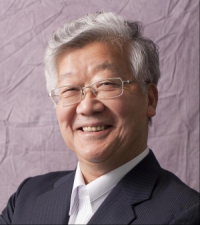SEMINAR
Biomaterials and Tissue Engineering Research Center, Shanghai Institute of Ceramics, Chinese Academy of Sciences
中国科学院上海硅酸盐研究所生物材料与组织工程研究中心
Cadherin-Matrix Engineering in Cell-Recognizable Biomaterials
Speaker:Prof. Toshihiro Akaike
(Professor Emeritus, Tokyo Institute of Technology
FAIS Biomaterials Center for Regenerative Medical Engineering)
报告时间:2016年10月14日(星期五)15:30
报告地点:4号楼14楼第二会议室
联系人:常江(52412804)
欢迎广大科研人员和研究生参加!
 Personal information:
Personal information:
TOSHIHIRO AKAIKE
Principal Investigator/Director,
FAIS Biomaterials Center for Regenerative
Medical Engineering
24-16, Kasuga 3-Chome,
Tsukuba, Ibaraki 305-0821, Japan
Phone: +81-29-858-7520
Email: akaike@fais.or.jp
Education and Carrier:
2014- present: Principal Investigator, Director
FAIS Biomaterials Center for Regenerative Medical Engineering, Tsukuba, Japan.
2012- 2014: Professor Emeritus, Professor of Donated Chair,
Biomaterials Design for Regenerative Engineering, Tokyo Institute of Technology, Japan.
2009 to 2012: Professor, Frontier Research Center & Graduate School of Bioscience and Biotechnology, Tokyo Institute of Technology, Japan.
2009 to present: Visiting Professor, School of Medicine, Tsinghua University , China.
2009 to present: Visiting Professor, Nankai University, China.
1990 to 2009: Professor, Graduate School of Bioscience and Biotechnology, Dept. of Bio- molecular Engineering, Tokyo Institute of Technology, Japan,
2000 to 2003: Professor, Graduate School of Medicine, Shinshu University, Nagano, Japan.
1989 to 1995: Project Leader, Akaike Project “High-functional Membrane for Molecular Recognition”, Kanagawa Academy of Sci. & Tech., Japan.
1980 to 1990: Associate Professor, Dept of Material Systems Engineering, Faculty of Engineering, Tokyo University of Agriculture and Technology. Japan.
Honors:
Tokyo Tech Award for the Best Teacher (2007)
Fellow, Biomaterials Science and Engineering, The International Union of Societies for Biomaterials Science and Engineering (2004)
Jorge Heller Journal of Controlled Release/CRS Outstanding Paper Award (1997)
Scientific Achievement Award, The Japanese Society for Biomaterials (1989)
Abstract:
Recently, embryonic stem (ES) and induced pluripotent stem (iPS) cells have shown remarkable potential to treat human diseases. Biomaterials are rapidly being developed as powerful artificial microenvironments to study and control stem-cell fate, such as proliferation and differentiation. Our recent advances include biomaterial-based artificial extracellular matrix formed by immobilizing cell-recognizable molecule, growth factors and cytokines. Here, we propose “Cadherin-Matrix Engineering” for new frontier of cell-recognizable biomaterials for construction of “Cell-cooking plate” for ES/iPS cells technology using chimeric proteins of cell adhesion molecules (e.g., E-cadherin, N-cadherin, or VE-cadherin).
Our novel E-cadherin-based engineered extracellular matrix showed fascinating results:
(1) highly homogeneous differentiation of definitive endoderm cells under single-cell level; (2) uniform distribution of growth factors resulted in controlled differentiation even in lower concentration of free culture due to the absence of serum and feeder layers; (4) highly functional hepatocytes within soluble factors; (3) completely defined and xeno- short period of differentiation; (5) striking effect of matrix-dependent cell sorting for isolation and enrichment of mature hepatocytes for possible elimination of contaminated and poorly differentiated cells; (6) the unique opportunity for continuous monitoring of cellular behavior in different stages of differentiation.
Taken together, our novel recombinant ECM is advantageous for generating homogeneous population of differentiated cells without any enzymatic stress and cell sorting, suggesting that the improved method of differentiation is highly promising for clinically significant adult cells (hepatocytes, cardiomyocytes, or pancreatic cells). We established a novel biomedical field in cadherin biology named as “Cadherin-Matrix Engineering” which can be applied to “Cell-cooking Plate” for ES/iPS cells in regenerative medicine.


 沪公网安备 31010502006565号
沪公网安备 31010502006565号